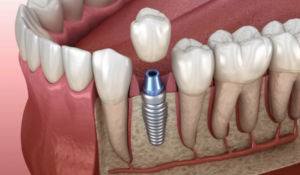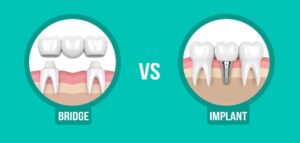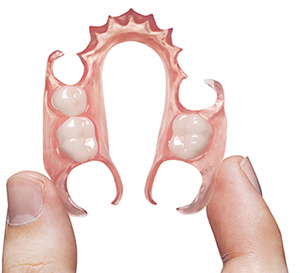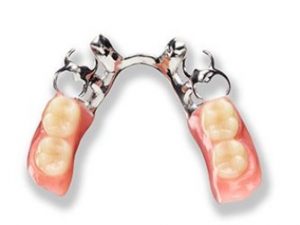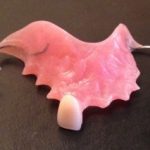
If you are missing a tooth, understanding your replacement options is crucial. This article will explore the top five methods for tooth replace, including dental implants, fixed bridges, removable partial dentures, temporary solutions, and advanced techniques like implant-supported bridges and All-On-Four implants.
Key Takeaways
- Dental implants are considered the gold standard for tooth replacement due to their durability, aesthetic appeal, and ability to preserve oral health by preventing bone resorption.
- Fixed bridges serve as a reliable alternative to dental implants for those unable to undergo the procedure, providing a permanent solution that requires some alterations to adjacent teeth.
- Removable partial dentures offer a flexible and affordable option for individuals with multiple missing teeth, though they require careful maintenance and may not fit as well over time.
Dental Implants: The Gold Standard
Dental implants have long been hailed as the gold standard for tooth replacement, and with good reason. These prosthetic replacements are designed to resemble natural teeth, offering a durable and aesthetically pleasing solution for missing teeth. Their benefits extend beyond mere appearance, significantly enhancing oral health and providing a long-term value that surpasses traditional tooth replacement options.
One of the standout features of dental implants is their ability to provide patients with the confidence to smile, eat, and engage in social activities without the fear of their artificial teeth failing. Unlike other tooth replacement options, dental implants do not rely on nearby teeth for support, preserving the integrity of your existing teeth and offering unparalleled stability and functionality.
Although the initial cost of dental implants may be higher, their durability and the substantial enhancement in oral health make them a cost-effective choice over time. We will explore the procedure, advantages, and suitability of dental implants.
Procedure Overview
The journey to getting a dental implant begins with a thorough examination and a detailed treatment plan laid out by your dentist. This initial step ensures that the procedure is tailored to your specific needs and circumstances.
The actual implant placement involves a surgical procedure where a titanium post is mounted into your jawbone. This post acts as a tooth root, providing a stable foundation for the replacement tooth.
After the implant is placed, the healing process begins, which typically takes several months. During this time, the implant integrates with the jawbone, a process known as osseointegration.
Following successful healing, an abutment is attached to the implant, and finally, a dental crown is placed on top during follow-up visits, completing the restoration.
Advantages of Dental Implants
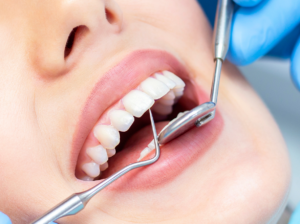
Additionally, dental implants help preserve the jawbone by mimicking the natural tooth roots, which significantly reduces bone resorption. This preservation of bone structure not only maintains facial aesthetics but also improves the ability to chew food efficiently.
Moreover, unlike other tooth replacement options, dental implants do not involve or compromise nearby teeth, preserving their health and integrity.
Who is a Candidate?
Determining whether you are a suitable candidate for dental implants involves assessing your overall oral health and medical history. Good candidates typically have healthy gums and sufficient bone density to support the implant. However, certain chronic illnesses such as diabetes or leukemia may affect eligibility and require a thorough consultation with your dentist and possibly a physician.
Candidates for dental implants should also have good oral hygiene and a commitment to regular dental visits to ensure the long-term success of the implants. Uncontrolled health conditions like high blood pressure or serious heart problems may necessitate additional medical evaluations before proceeding with implant treatment.
Overall, a detailed assessment by dental professionals is crucial to evaluate suitability for implants.
Fixed Bridges: A Reliable Alternative
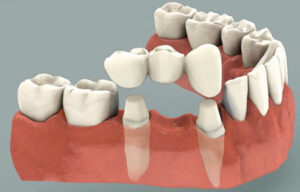
Unlike removable partial dentures, which can be taken out and cleaned separately, fixed bridges offer a permanent solution that feels and functions much like natural teeth. However, if all teeth need replacement, complete dentures might be suggested instead of fixed bridges.
We will examine the different types of fixed bridges, their benefits, and the considerations for their care.
Types of Fixed Bridges
There are several types of fixed bridges, each suited to different dental needs. The most common type is the traditional tooth-supported bridge, where crowns are placed on the adjacent teeth to provide support. This type is typically used when there are teeth on both sides of the gap created by the missing tooth.
Another type is the cantilever bridge, which is used when there is only one adjacent single tooth next to the gap.
Lastly, the Maryland bridge, also known as a resin-bonded bridge, involves a metal or porcelain framework bonded directly to the back of the adjacent teeth. However, the choice of bridge depends on the location of the missing teeth and the overall bite strength to ensure durability and effectiveness.
Benefits of Fixed Bridges
Fixed bridges offer several benefits, making them an attractive option for many patients. They are typically cheaper than dental implants, making them a more affordable solution for replacing missing teeth. Fixed bridges also provide a natural look and feel, improving the appearance of adjacent teeth and restoring a patient’s smile.
Furthermore, fixed bridges are permanent and do not come in and out like removable partial dentures. This permanence can be reassuring for patients, knowing that their tooth replacement will remain securely in place. The procedure to place a fixed bridge usually requires only a few visits to the dentist, making it a relatively quick and efficient solution.
Considerations and Care
While fixed bridges are a reliable option, there are some important considerations and care requirements to keep in mind. One downside is that healthy tooth structure may need to be removed from the adjacent teeth to accommodate the bridge. This alteration can impact the long-term health of those teeth.
Maintaining fixed bridges requires diligent oral hygiene, particularly cleaning around all units of the bridge, especially underneath. Unlike dental implants, which do not require the alteration of adjacent teeth, fixed bridges necessitate careful maintenance to avoid complications.
Regular dental visits are essential to ensure the longevity and functionality of the bridge.
Removable Partial Dentures: Flexible Solutions
Removable partial dentures offer a flexible solution for individuals with a few missing teeth. These devices consist of replacement teeth attached to a pink plastic base that may cover a metal framework. They are designed to fit around your existing teeth, providing a functional and aesthetic solution for tooth loss.
One of the key advantages of removable partial dentures is their flexibility. Unlike fixed bridges, they can be easily removed for cleaning and maintenance. This makes them a practical option for those who prefer not to have a permanent fixture in their mouth.
Partial dentures are often compared to dental implants, which offer a more permanent solution but at a higher cost. We will explore the types of partial dentures, their maintenance, and their suitability and cost.
Types of Partial Dentures
Partial dentures can be made from two main types of materials: metal and Valplast-based. Metal-based partial dentures are known for their durability and ease of adding teeth if more are lost in the future. These dentures use metal clasps to attach to the natural teeth, providing strong support.
On the other hand, Valplast-based partial dentures offer a more comfortable fit with no metal clasps, designed to conform to the shape of the teeth and gums. This type of denture is often preferred for its aesthetic advantages and comfort.
However, wearing partial dentures can sometimes be uncomfortable as the foreign material might irritate the mouth, requiring some time to get used to.
Maintenance and Comfort
Proper maintenance is crucial for the longevity and effectiveness of removable partial dentures. It is recommended to avoid using toothpaste to clean them, as it can scratch and damage the dentures. Instead, specific denture cleaners should be used to maintain their condition.
Additionally, it is important not to force the dentures into place by biting down, as this can cause damage. Partial dentures should not be worn 24 hours a day and should be removed at night to allow the gums to rest.
Regular adjustments and visits to the dentist can help manage comfort and ensure the dentures fit well over time.
Suitability and Cost
Removable partial dentures are suitable for patients who are missing some but not all of their natural teeth. They provide a flexible solution to restore function and aesthetics, allowing patients to eat and speak more comfortably. However, over time, these dentures may no longer fit well, and there is a risk of breaking, cracking, or chipping.
The cost of partial dentures can vary significantly based on the materials used, the complexity of the design, and specific dental needs. Despite these potential issues, removable partial dentures remain a popular choice due to their affordability and flexibility compared to other tooth replacement options.
Temporary Solutions: Flippers and Immediate Dentures
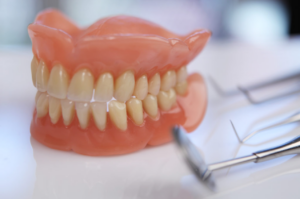
Flippers serve as a convenient and easy-to-use temporary replacement after tooth extraction, although they may have limitations in terms of stability and durability. Immediate dentures, on the other hand, are placed right after tooth extraction to maintain appearance and function during the healing phases.
Let’s look closer at these temporary solutions.
Flippers
A dental flipper is an acrylic partial denture that can be easily removed and is mainly used post-extraction. These temporary partial dentures can flip in and out of position, providing a quick and temporary solution to replace missing teeth. Flippers are designed to prevent adjacent teeth from shifting into the space created by a missing tooth.
However, flippers do have their limitations. They may have a poor fit and can make eating difficult. They are intended to be used for about 2-4 months, primarily to maintain appearance while more permanent solutions are being prepared. Because they do not rely on surrounding teeth for support, their effectiveness can sometimes be limited.
Immediate Dentures
Immediate dentures are placed right after tooth extractions to fill gaps and maintain appearance during the healing process. These dentures help minimize gum bleeding and protect the extraction site while providing aesthetic benefits during healing. They cover the upper or lower jaw and can be a suitable temporary solution before transitioning to a more permanent option.
The use of immediate dentures ensures that patients do not have to go without teeth during the healing period, which can be several months. This immediate replacement helps maintain the structure of the mouth and provides functional benefits, allowing patients to chew and speak more comfortably during the healing phase.
Advanced Options: Implant-Supported and All-On-Four
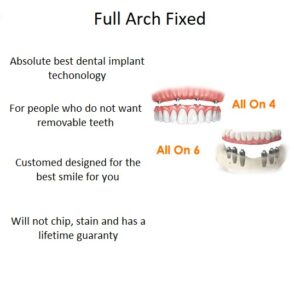
We will delve into these advanced options in more detail.
Implant-Supported Bridges
Implant-supported bridges are an excellent option for replacing multiple missing teeth in a row. Unlike traditional bridges, which rely on adjacent teeth for support, implant-supported bridges use dental implants to provide stability. Typically, two implants are used to anchor the bridge, while the middle teeth are held in place without any screws. This method offers a secure and long-lasting solution, especially beneficial for those who have lost several teeth consecutively.
The stability provided by implant-supported bridges means that they function much like natural teeth, allowing patients to chew and speak with ease. This approach also helps preserve the jawbone and prevents the shifting of surrounding teeth, maintaining the overall structure of the mouth.
For those looking to replace multiple missing teeth without compromising the health of adjacent teeth, implant-supported bridges are a highly effective option.
All-On-Four Implants
The All-On-Four technique revolutionizes full-arch tooth replacement by using only four to six implants per jaw. This method provides a natural-looking, non-removable implant-supported bridge, offering a comprehensive solution for extensive tooth loss. One of the main advantages of the All-On-Four technique is that it requires fewer implants compared to traditional methods, which can significantly reduce the overall cost and complexity of the procedure.
During the All-On-Four surgery, all remaining teeth are extracted, implants are placed, and a provisional appliance is attached. This provisional appliance is later replaced with a permanent hybrid after a healing period of 4-6 months.
While the initial costs associated with this procedure can be high due to its complexity, the long-term benefits and improved quality of life make it a worthwhile investment for many patients.
Factors to Consider When Choosing a Tooth Replacement Option
Choosing the right tooth replacement option involves weighing several factors, including cost, health considerations, and lifestyle needs. The initial expenses and long-term maintenance costs can vary widely among the different options. For example, dental implants can range from $200 to several thousand dollars, but their durability often makes them a cost-effective solution over time. On the other hand, more affordable options such as removable partial dentures may have lower initial costs but might require frequent adjustments and replacements.
Health considerations are also crucial. Dental implants reduce the risk of complications for adjacent teeth by acting as independent structures, preserving the health of your remaining teeth. They also help prevent bone loss, maintaining facial structure and overall oral health. It is essential to replace missing teeth promptly to prevent neighboring teeth from shifting into the empty space, which can lead to further dental issues.
Lastly, lifestyle factors such as activity level and job demands can influence your choice. For instance, individuals with active lifestyles or those in public-facing roles may prefer the stability and aesthetics of fixed solutions like dental implants or bridges. In contrast, those looking for flexibility might opt for removable partial dentures.
Consulting with a dental professional can help you weigh these factors and choose the best tooth replacement option for your needs.
Summary
In conclusion, the journey to replace missing teeth can be navigated with a variety of effective methods, each catering to different needs and circumstances. Dental implants stand out as the gold standard, offering durability, natural appearance, and significant oral health benefits. Fixed bridges provide a reliable and sometimes more affordable alternative, while removable partial dentures offer flexibility and ease of maintenance.
Temporary solutions like flippers and immediate dentures serve essential roles during the healing process, ensuring patients’ aesthetic and functional needs are met. Advanced options like implant-supported bridges and the All-On-Four technique cater to those with extensive tooth loss, providing comprehensive and lasting solutions.
Ultimately, the best tooth replacement option depends on individual health, lifestyle, and financial considerations. By understanding the benefits and procedures of each method, you can make an informed decision that will restore your smile and enhance your quality of life.
Frequently Asked Questions
What makes dental implants the gold standard for tooth replacement?
Dental implants are deemed the gold standard for tooth replacement due to their ability to closely mimic natural teeth and their long-lasting durability. They also help preserve jawbone health while maintaining the integrity of surrounding teeth.
Are fixed bridges a good alternative to dental implants?
Fixed bridges can be a suitable alternative to dental implants, offering a more affordable option while providing a natural appearance. However, they necessitate modification of neighboring healthy teeth and require consistent maintenance.
How do removable partial dentures compare to other tooth replacement options?
Removable partial dentures provide a cost-effective and flexible option for tooth replacement compared to fixed solutions like dental implants and bridges. However, they may require adjustments and can be less comfortable over time.
What are the benefits of temporary solutions like flippers and immediate dentures?
Temporary solutions like flippers and immediate dentures offer immediate aesthetic enhancement after tooth extraction and help maintain oral function during healing. They prevent adjacent teeth from shifting and support overall gum health.
What factors should I consider when choosing a tooth replacement option?
When choosing a tooth replacement option, consider the procedure’s cost and long-term maintenance, your overall oral health, lifestyle needs, and the impact on adjacent teeth. Consulting with a dental professional is essential to make an informed decision.

